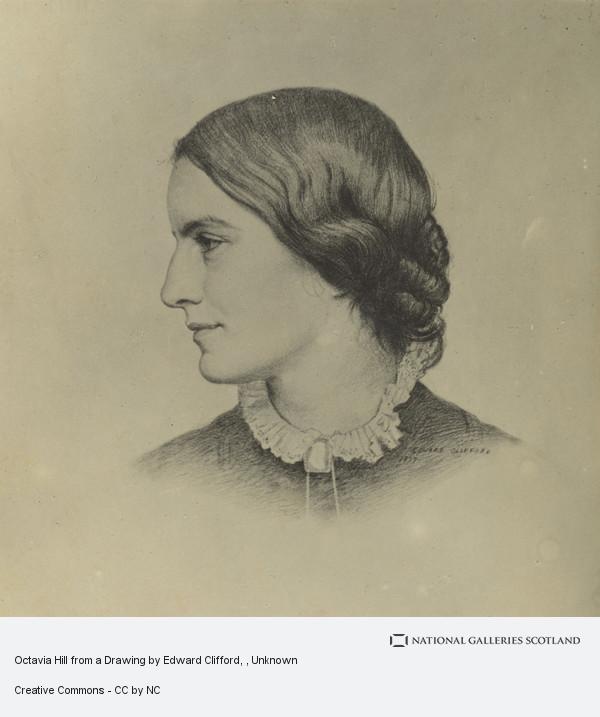With no formal education, at the age of 14 Octavia Hill (1838-1912) began advocating for the welfare of working-class people in England. Octavia was the daughter of James Hill and Caroline Southwood Smith. Octavia’s maternal grandfather, Dr. Thomas Southwood Smith, was an early advocate for sanitary reform and was an important figure in Octavia’s life. Only two years after Octavia was born, James Hill declared bankruptcy and began to have mental health problems. As a result, Thomas provided financial support and shouldered some of Hill’s parental roles. Although she was living north of London in Finchley, Octavia developed a strong concern for the working-class poor living in Victorian London.

When she was 13, Octavia began training at a co-operative guild that provided employment for distressed gentlewomen. The following year the guild expanded to produce toys for poor children, something Octavia had been doing before she began at the guild. She was placed in charge of the workroom, where she supervised children, who left the guild each evening to return home to appalling living conditions. Octavia’s awareness of the social issues and her deep despise of organizations that caused dependency, lead her to create her own solution.
In 1865, the independently wealthy London advocate John Ruskin leased 3 cottages, each with 6 rooms for Octavia to manage. The following year, John acquired 5 more houses for Octavia to manage. Octavia was a firm, but fair property manager. She rented the homes out to the working-class poor at an affordable rent, repaired building issues promptly and she maintained personal relationships with the tenants. Additionally, she collected the rent in a timely manner and had little tolerance for late payments. Octavia’s strict management was attractive to other investors and by 1874 Octavia, with help from her assistants, was providing decent housing to about 3,000 people. In 1884, Octavia was recognized by the Ecclesiastical Commissioners for her enlightened management approach, and she was placed in charge to reform their South London slum properties. Octavia quickly implemented her management model at the properties.
Octavia wanted to do more than provide working-class Londoners with proper housing, she wanted to improve their quality of life. Octavia believed that the urban workforce deserved access to open natural spaces. She helped campaign to preserve the rural and woodland spaces surrounding London. She fought to stop the construction of railways in natural spaces as well. In 1893, Octavia and others created the National Trust for Places of Historic interest or Natural Beauty to help protect endangered natural and historic spaces.
Octavia Hill dedicated 59 years of her life to the improvement of living conditions for the London working-class. Octavia’s activism centered around respect. She showed her respect for tenants through the prompt repair of the rental spaces and they showed her respect in the ways they treated the property and other tenants. Similarly, Octavia showed respect for the well-being of others through the preservation of natural spaces.
-Maria Smith, Junior Girl
This post is part of our Sites of Girlhood project. Click here to learn more.
